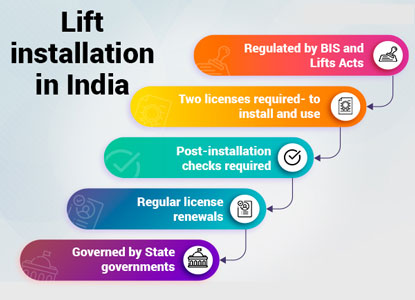
Safety Standards and Regulatory Compliance of Lifts and Elevators in India
In India, the safety and regulatory framework governing lifts and elevators is designed to ensure passenger security, operational efficiency, and structural reliability across various types of buildings and usage environments. The primary regulatory authority overseeing elevator installation and safety in India is the Lift Inspectorate or Lift Licensing Authority, which operates under state-specific laws such as the Bombay Lifts Act, 1939 (applicable in Maharashtra) or Karnataka Lift Act, 1974. These acts mandate that all elevators must be licensed, periodically inspected, and maintained in compliance with prescribed safety norms. In addition to state legislation, many Indian elevator manufacturers follow or adopt international standards such as EN 81 (European elevator safety standards) and ISO 25745 for energy performance and efficiency. Furthermore, Bureau of Indian Standards (BIS) guidelines, particularly IS 14665 (for traction lifts) and IS 15259 (for hydraulic elevators), provide technical specifications and safety protocols covering aspects like door safety, overload protection, emergency communication, fire safety, and braking systems.
Each elevator installed in India must undergo rigorous testing before commissioning, including load testing, speed verification, and braking performance. Compliance with fire safety regulations, such as provisions under the National Building Code (NBC) of India, is also critical, especially for elevators in high-rise buildings. NBC mandates the installation of fire-rated lift shafts and the inclusion of firefighting and emergency rescue provisions. Additionally, with the rise of smart and IoT-enabled elevators, newer compliance demands focus on cybersecurity, electrical safety, and uninterrupted power supply systems to ensure elevator operations during outages. Safety devices such as automatic rescue devices (ARD), overspeed governors, door interlocks, and buffers are now standard features in most lifts, as per updated guidelines. The elevator industry is also experiencing stricter enforcement through third-party inspections, digital certification systems, and increased accountability from OEMs and AMC service providers. As urban infrastructure expands and high-rise developments become the norm, the Indian government and industry bodies are working closely to strengthen and modernize lift safety standards. For any commercial, residential, or industrial project, ensuring strict adherence to these codes is not just a legal requirement but a critical factor in safeguarding human lives and maintaining operational trust.








